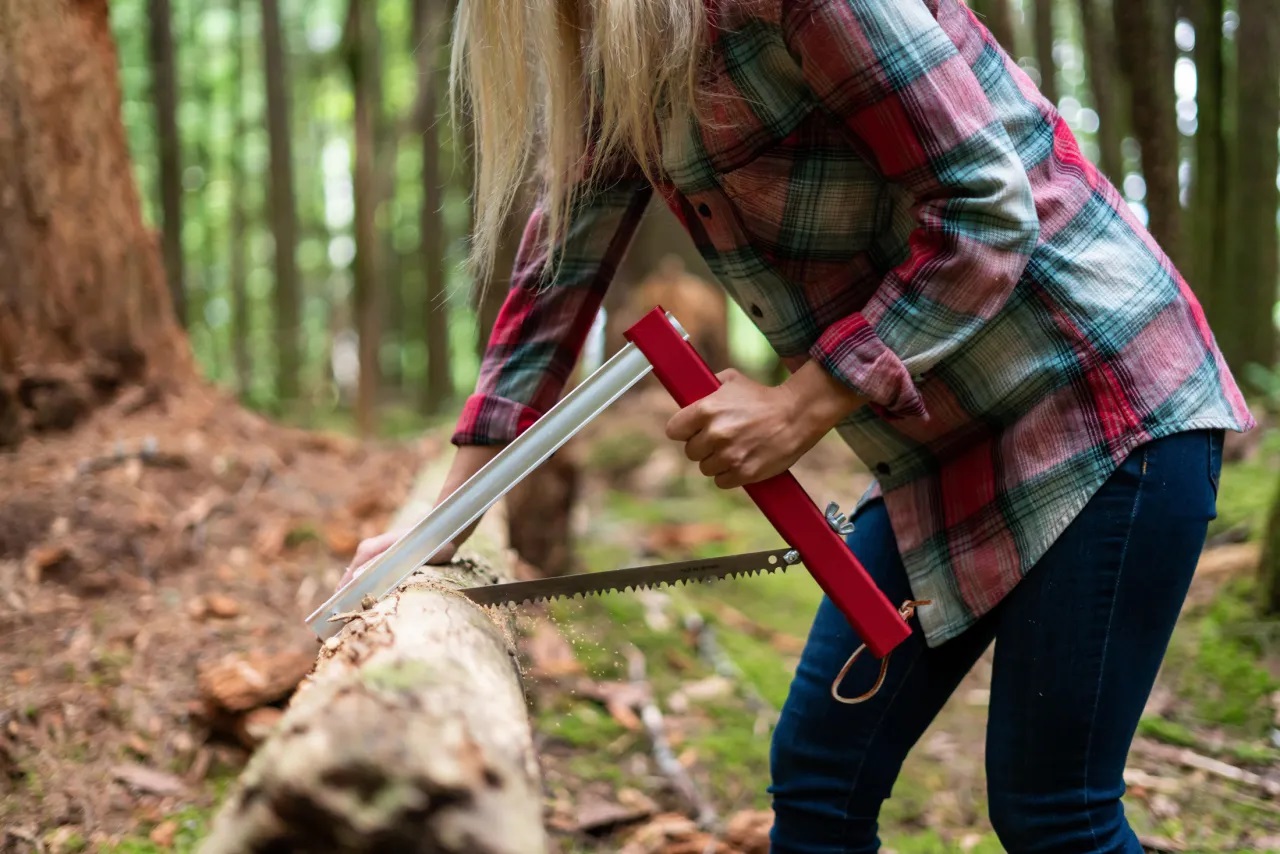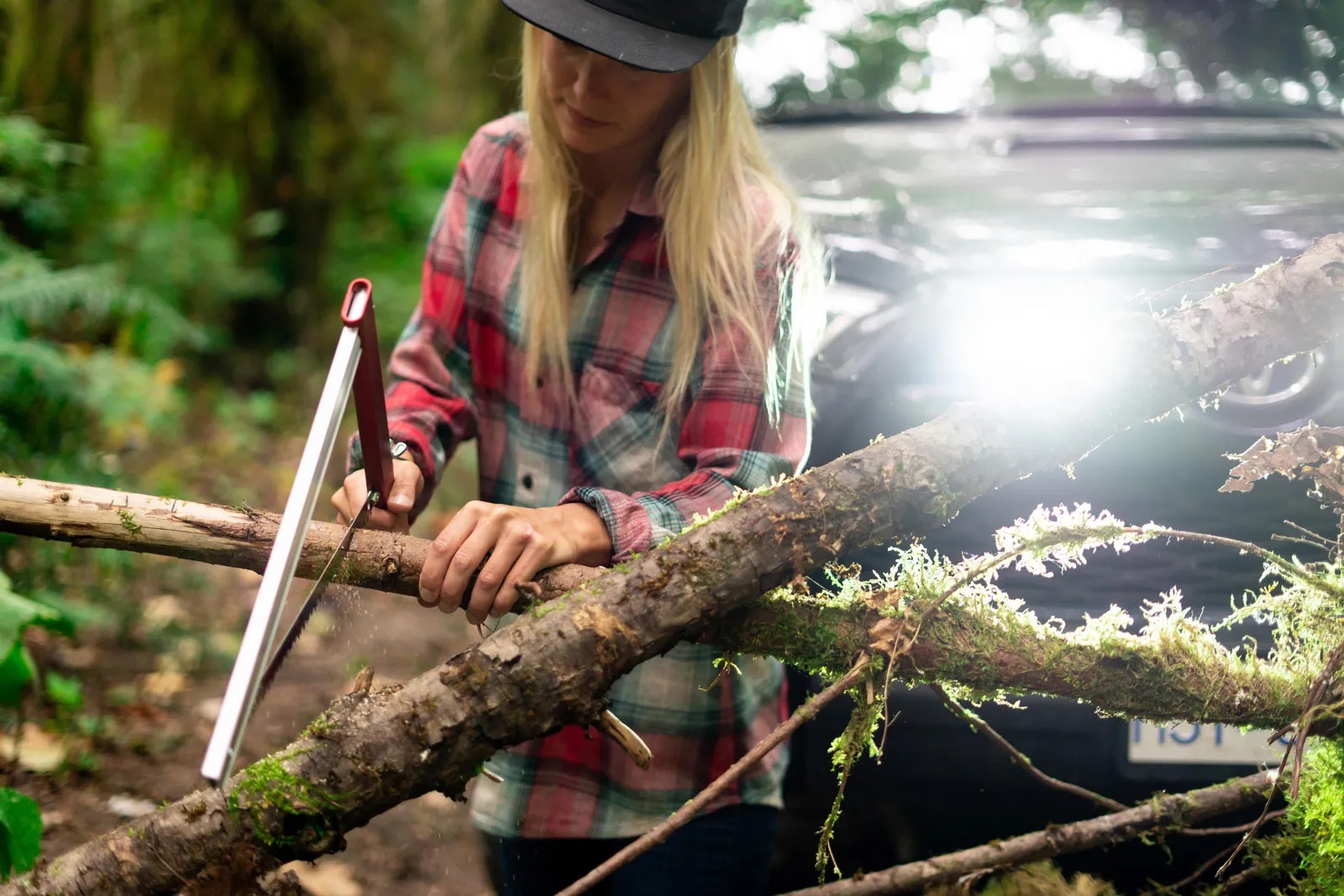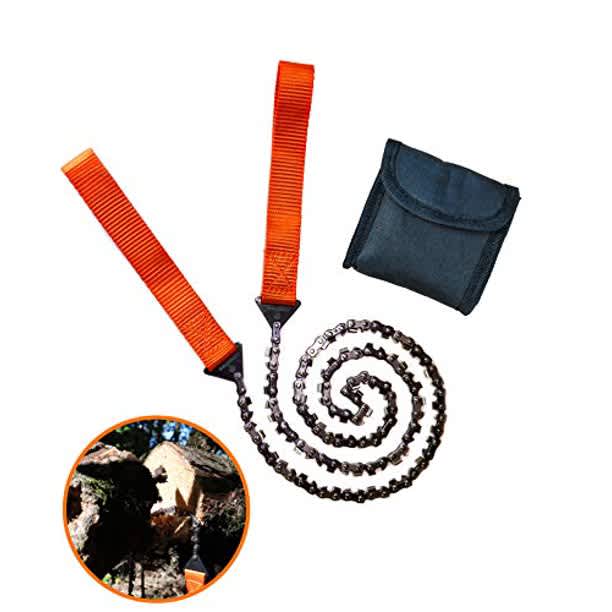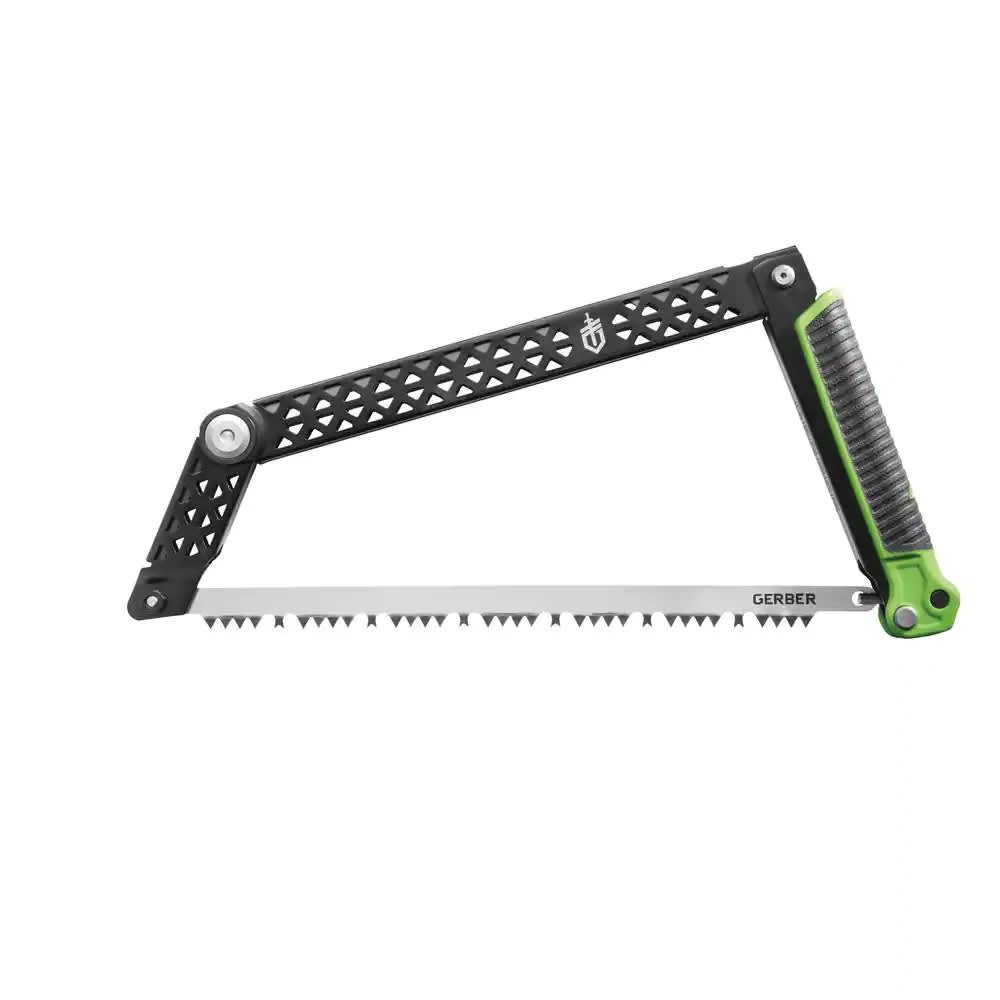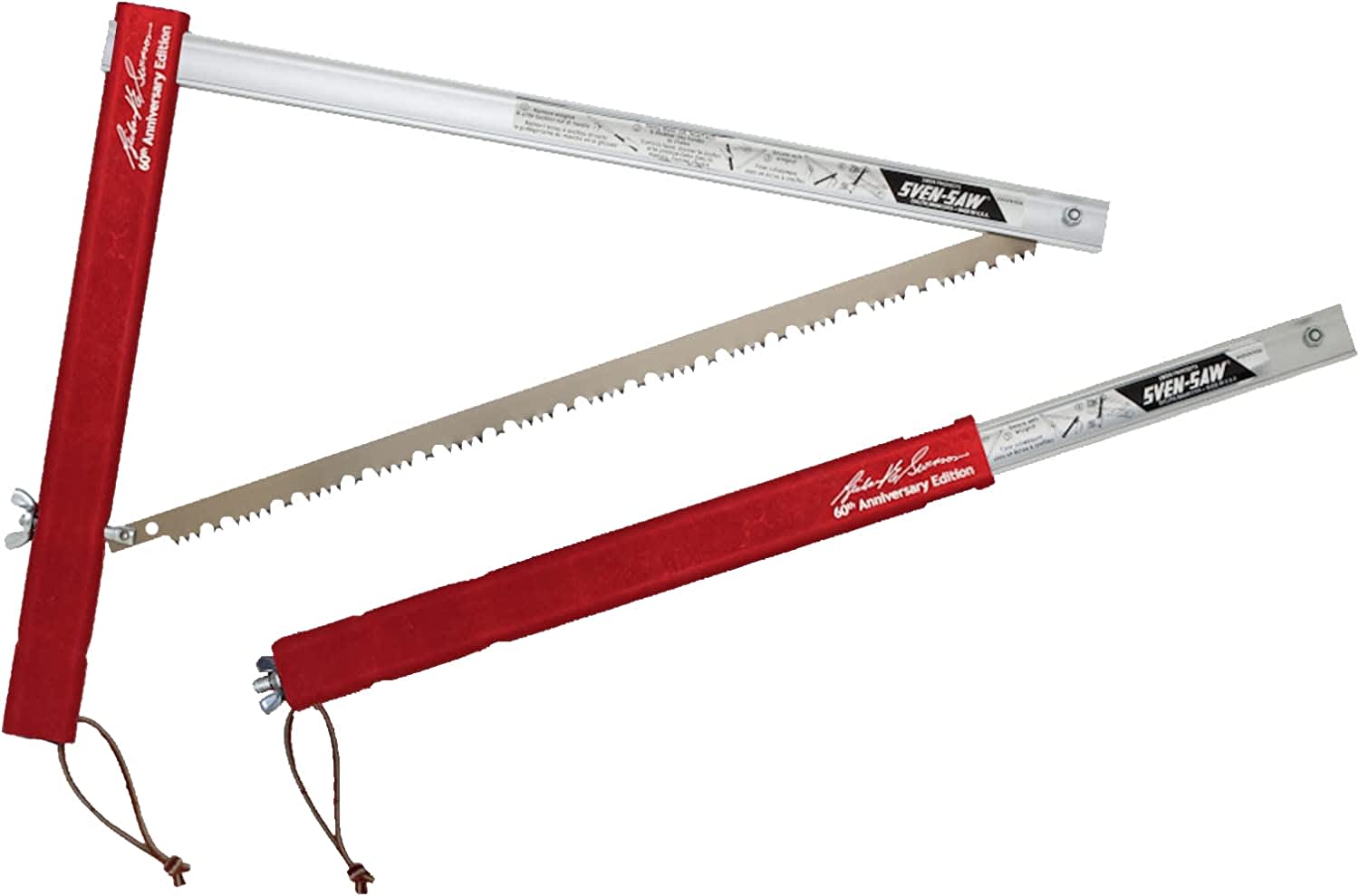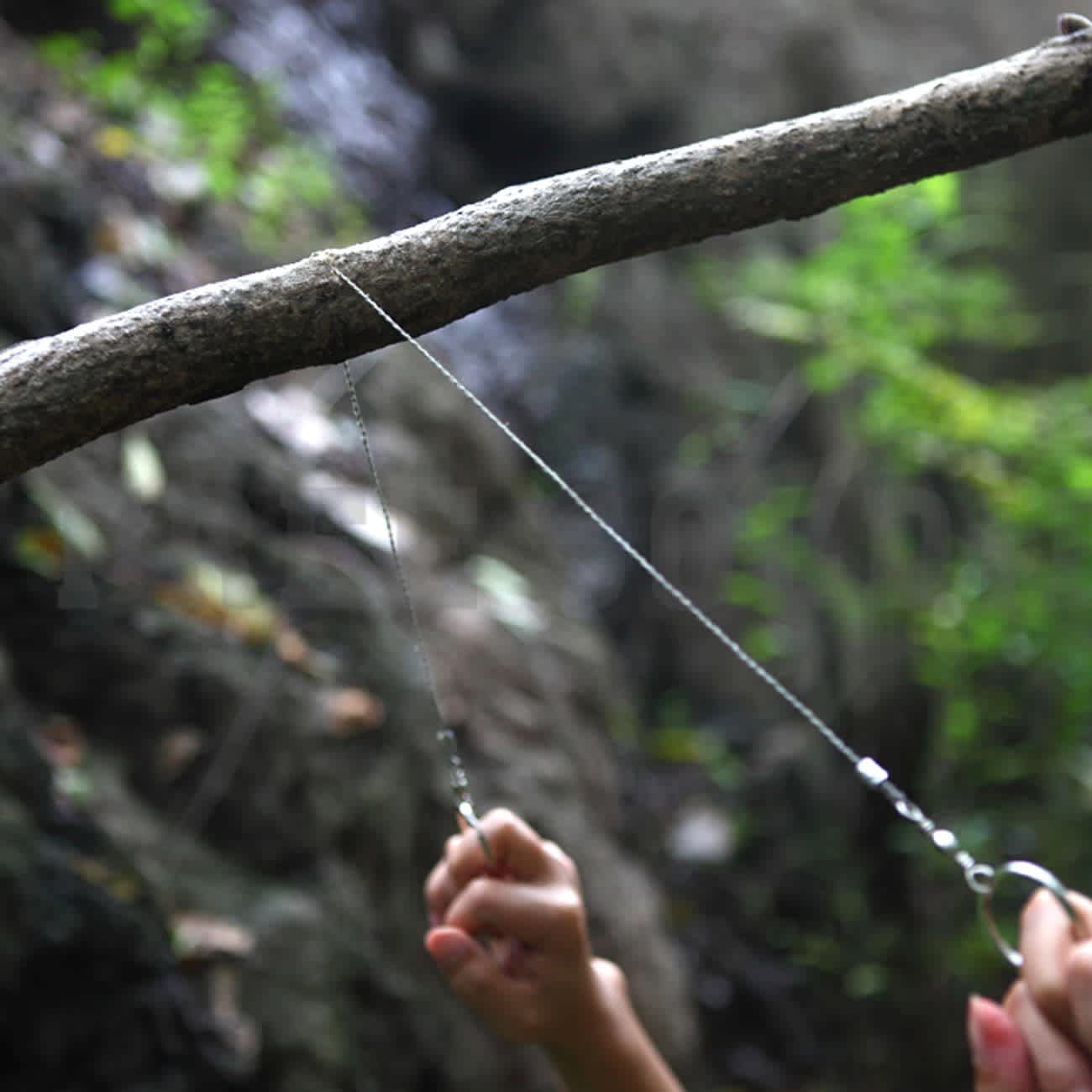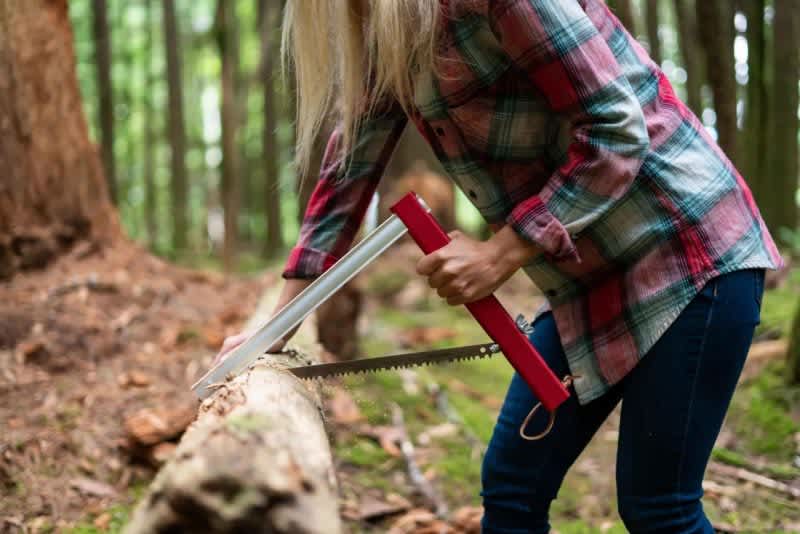
+
–
Table of Contents
1. Roadfare Pocket Chainsaw
This compact portable hand chainsaw is great for bigger jobs and can even be used to fell medium-sized trees with a bit of effort. The biggest plus of this option is its compact size and portability. The saw is 36-inches long and features 48 teeth and can shred through both dead and live trees with ease. the bi-directional design also means that you won’t be wasting effort with each pull.
Pros/Lightweight, compact, and affordable
Cons/Nylon handles, while compact, aren’t very comfortable
Bottom Line/A great option if you’re looking to optimize for space and efficieny
2. Gerber Freescape Camp Saw
Featuring a more traditional “bow” style makes this one great for tackling one-handed tasks like cutting through lots of branches. The design might seem bulky but the beauty of this Gerber option is that it allows the user to fold it down for compact and convenient storage. The 12-inch blade features a rubber grip and has a little bit of wiggle room so that you can maximize the cutting area of your saw without needing to reach for a smaller tool.
Pros/Foldable compat design with traditional bow style for easy cutting
Cons/Shorter length requires more effort to saw through wood
Bottom Line/Great for shortening fallen branches for firewood
3. Sven-Saw Folding Saw
The Sven-Saw is the original folding saw and is ideal for camping, canoeing, hiking, backpacking, hunting, yardwork and many other outdoor activities. The wicked-sharp blade is made from hardened Swedish steel, and the rest is made in the US, as it has been for almost 60 years. The hardened, anodized aluminum handle and backbar work in any weather or temperature, and won’t corrode or rust. When not in use the blade folds into the handle, which serves as a protective sheath, so it slides easily in and out of your pack.
It’s great for cutting firewood, brushing trails, clearing snowmobile trails or getting rid of invasive plants in your backyard!
Pros/High Quality blade
Cons/Not the most comfortable handle
Bottom Line/A great option that is even more compact than the Gerber Freescape
4. BlueStraw Survival Wire Saws
If you’re looking for an option that will at least give you the ability to saw through wood if you need to but isn’t necessarily required then this three-pack of Blue Straw survival wire saws is the perfect option for you. The saws are very lightweight and only weigh 25 grams a piece and are made from high-quality stainless steel making them more resistant to corrosion after use.
Pros/Lightweight, affordable and ultra compact
Cons/Not comfortable to use
Bottom Line/A great peace of mind option to have in any hiking, camping, or survial kit you have.
I’m having trouble getting a cut started. What am I doing wrong?
This is something that is a bit counterintuitive if you’ve never tried to use a saw before. Generally, saws rely on a combination of pressure from the user and the blade itself to stay stable while cutting. When you’re first starting off your cut, you should try to make lighter passes until the blade or chain is fully covered by the material you’re cutting through. After that, it should be a breeze and all that is needed to saw through almost anything is consistent pressure and motion.
I’m staying in a National Forest, do I need a permit to cut down tress for firewood?
Most national forests allow users to harvest trees for personal use firewood and Christmas trees, but you must first have a Forest Service-issued permit and you must follow specific guidelines, which can vary from forest to forest.
Generally, you’ll find that most permits are easy to obtain and will far outlast the amount of wood you’ll need for any single camping trip as most permits cover up to one cord of wood – these permits usually cost around $10 and that makes them much more affordable than purchasing one or several bundles from the park ranger’s office.
Can’t I just bring firewood from home?
You could, but this isn’t good practice and in some cases, it is outright banned. The reason it’s not smart to do this, especially when traveling long distances is that there is a chance you could bring along with you invasive species of insects or possibly diseases that could spread to the location you’re camping at. The best practice is to source wood that is local to the area you’re camping in and it’s also best if you harvest trees and branches that are effectively dead. Not only will they burn better but you’ll also be helping clear out more flammable wood that can spread fire more quickly if a wildfire breaks out.
We are committed to finding, researching, and recommending the best products. We earn commissions from purchases you make using the retail links in our product reviews. Learn more about how this works.
